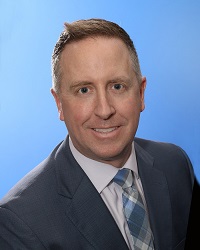 To compete for many of the same workers thatcorporations seek, health care organizations have implemented plandesign changes to lift plan metrics such as participationand deferral rates. (Photo: Shutterstock)
To compete for many of the same workers thatcorporations seek, health care organizations have implemented plandesign changes to lift plan metrics such as participationand deferral rates. (Photo: Shutterstock)
It's a noble calling to work in the health care industry, and ittakes a special person to dedicate his or her career to helpingothers. However, as most HR professionals of health careorganizations know all too well, the demand to attract and retainqualified candidates is tough. In addition to an unemployment rateat a near 50-year low in the U.S., the health care sector alsofaces a shortage of qualified doctors and nurses.According to industry forecasts, the U.S. will see a shortage of upto nearly 122,000 physicians by 2032, and the demand for registered nurses is expected to increase bymore than 438,000 positions (or 15%) in 2026 to fill newly createdpositions and to replace retiring nurses.
|Given this backdrop, taking care of those professionals whodedicate their lives to serving others has never been moreimportant. And a good place to start, especially for those healthcare organizations looking to differentiate themselves in the"fight for talent," is with their retirement programs.
|To help health care providers benchmark their retirement plans,Voya Financial recently collaborated with the American Society forHealthcare Human Resources Administration (ASHHRA) of the AmericanHospital Association (AHA) to conduct its first surveyof retirement plans in the health care sector. The surveyincluded insights from hospital administrators and chief financialofficers from across the U.S.
|Below are three key trends for health care organizations to keepin mind as they evaluate whether they have the right prescriptionfor the health of their retirement program in an increasinglydynamic and complex industry.
|1. Financial wellness is the newfrontier.
The topic of financial wellness has become a popular subject inthe retirement industry. The rise of a new generation in theworkforce, burdened with student debt and with a different attitudetoward work and career, has only further spurred interest infinancial wellness programs. For example, Millennials andGeneration Z often find it harder to contribute to their retirementplans early in their careers as they grapple with paying offexpensive student loans.
|While industry research points out that managing student debt is also a stressor forGen Xers and Baby Boomers (especially as some try to help theirchildren pay for college), the attitude of younger generationstoward concepts of careers, retirement and a lifetime at workdiffers markedly from that of prior generations. Millennials andGen Zers want financial security now and through their lives, notjust in retirement. They aspire to a lifetime of sound financialhealth as part of a holistic view, not with a singular focus onretirement.
|Given this shift in mindset, it's not surprising that 81% ofsurveyed health care organizations said helping their employeeswith financial wellness is a very important or important priorityfor them over the next two years. Interestingly, 54% of health careorganizations surveyed wish their retirement plan service providerwould do more to help their employees with retirement readiness andfinancial wellness.
|To compete in today's environment, hospitals, medical centersand other health care systems need to consider offering holisticfinancial wellness programs that support the overall financialhealth of individual employees.
|For example, consider including topics that go beyond budgetingand debt management, like retirement income planning and healthsavings accounts (HSAs). Also, don't be afraid to ask yourretirement service provider for help — most have the expertise andare eager to support.
|Remember, any good financial wellness program should helpemployees understand what is required to reach their financialgoals. Your retirement plan provider can assist with establishing acadence of communication with your employees using a variety ofdelivery mechanisms, including online, one-on-one education, groupmeetings and periodic reviews.
|And finally, as health care organizations increasingly considerthe financial wellness needs of all their employees, developing aninclusive culture should also be a top priority. Specifically, thisincludes offering benefits for employees with disabilities andspecial needs, including their caregivers.
|While only 6% of health care organizations currently offer acaregiving financial planning service, according to Voya's healthcare survey, 25% plan to provide this service in the next 12months. When you consider that industry research estimates thatcaregiving-related expenses cost employersalmost $38 billion each year (e.g. absenteeism, lost productivity,and recruiting and training new staff), thinking more holisticallyabout your organization's benefits offering is not only the rightthing to do — it also makes good business sense.
|2. Health care plan metrics now closely align with those ofcorporate plans.
Health care as an industry is no longer an outlier in theretirement world. Gone are the days where a 30% participation rateor a 2% average deferral rate is considered the norm. According toVoya's health care survey, on average, 67% of health care employeesparticipate in their retirement plan and contribute an average 8%of their pay.
|Why this improvement? Nurses, orderlies, administrators andother health care workers have similar financial wellness needs asworkers in any other segment of the workforce. Therefore,expectations for growth and performance in their retirement plansshould be no different.
|Pressed to compete for many of the same trained and tech-savvyworkers that corporations seek, health care organizations haveimplemented plan design changes to lift plan metrics such asparticipation rates and deferral rates, employer contributions, andautomatic enrollment and deferral increases.
|3. Health care organizations rely on plan advisors andconsultants.
We've all heard the expression: "Know what you don't know."According to Voya's research, the majority of health careorganizations are taking this to heart. Approximately 88% of healthcare organizations retain the services of a retirement plan advisoror consultant. More than three-quarters rely on the plan advisor orconsultant to make plan design recommendations, explain the feesproviders charge and to assist with fiduciary responsibilities.
|For those health care organizations that do not have a trainedretirement plan specialist on staff, retaining outside help can beeven more beneficial. Plan advisors and consultants have deeptechnical knowledge and expertise that can help ensure yourretirement plan is handled with the appropriate care and diligence— in addition to tracking key plan metrics to evaluate the overallhealth of your plan.
|Creating a healthy retirement plan
While every health care organization has its own uniquechallenges and parameters for how it defines success, taking thetime to benchmark the health of your retirement program is aworthwhile exercise. A thorough investigation can bring about abreakthrough for your organization — measured not only in planoutcomes but also in business metrics such as employee retention,cost of care, quality of care and organizational growth.
|And the good news is that you don't have to go at it alone.Knowledgeable plan advisors or consultants can help you evaluateareas of opportunity — which, ultimately, will help your healthcare organization identify the right prescription to help youremployees prepare for a secure financial future.
|||
Brodie Wood is Senior Vice President,National Practice Leader | Healthcare | Education | NFP Markets atVoyaFinancial.
Complete your profile to continue reading and get FREE access to BenefitsPRO, part of your ALM digital membership.
Your access to unlimited BenefitsPRO content isn’t changing.
Once you are an ALM digital member, you’ll receive:
- Critical BenefitsPRO information including cutting edge post-reform success strategies, access to educational webcasts and videos, resources from industry leaders, and informative Newsletters.
- Exclusive discounts on ALM, BenefitsPRO magazine and BenefitsPRO.com events
- Access to other award-winning ALM websites including ThinkAdvisor.com and Law.com
Already have an account? Sign In
© 2024 ALM Global, LLC, All Rights Reserved. Request academic re-use from www.copyright.com. All other uses, submit a request to [email protected]. For more information visit Asset & Logo Licensing.









